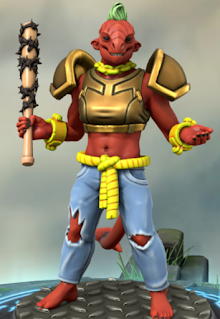By J.S. Puller
When I say “Dungeons & Dragons,” I suspect one of two images comes to your mind: Either, you picture Chris Pine looking dashing and debonair, as in the recent movie Dungeons & Dragons: Honor Among Thieves, or else you imagine a cluster of pimply-faced, socially-inept teenagers, sitting around a table wearing capes and funny hats. Neither correctly encapsulates the world of Dungeons & Dragons—or the larger world of role-playing available. Write this down: NEITHER IS CORRECT. Despite the myopic rep they sometimes get, role-playing games are tools with an incredible power to bring people together, forging lifelong friendships and bonds. More importantly, for the purposes of this essay at least, they are tools to bring people together for the act of creation. Players and dungeon masters (those are the players running the game) alike are engaged in populating a rich and vibrant world. As a lifelong role-player myself, I’ve participated in exciting and emotional gaming over the years that has stuck with me, resonating through my life and shaping my writing.
And that’s how we get to the good part: Writing. Role-playing games provide some extremely helpful tools that can quickly be adapted to suit an author’s needs. Here, I’ll share just a couple of them.
CHARACTER SHEETS
Most role-playing games can’t even begin until the players fill out their character sheets. These are more or less worksheets, individualized to different games and players in those games, that define who a character is and what they’re capable of doing. More than that, though, character sheets often serve as helpful cheat sheets to outline character personalities and interests. For example, take a look at the Dark Ages: Vampire character sheet above. It describes a character named Scarlet. As you can see, Scarlet doesn’t have much Charisma, as indicated by the single dot beside the word. She does, however, possess a great deal of Stamina, with four dots beside the word. Scarlet’s going to be much likely to run away from the evil sheriff, rather than flirting her way out of danger.
And now for the plot twist. Perhaps you’ve already spotted it, since I’m
no M. Night Shyamalan. A writer or
illustrator can use character sheets like this to assist with the planning and
development of the characters in their stories.
Our friend Scarlet is actually a character from a play that I wrote a
couple of years ago (see Ellen in THE DEATH OF ROBIN HOOD). I created similar
sheets for each character in the story, which helped me to shape their actions and dialogue, which helped me to make choices about how they would respond to the situations coming at them.
Perhaps filling out the whole sheet for every single character is a little
much to ask. At the very least, I would
draw some attention to the top of the sheet, where you can read the words
“Nature” and “Demeanor.” Nature is who
someone is on the inside, the core of their personality that guides their
choices. Demeanor, meanwhile, is the
face they present the world. Scarlet
pretends to be a tough-as-nails survivor who will meet challenges with stoicism
and determination. But secretly, she has
the nature of a caregiver. So, every
action she takes is driven by her desire to protect others. And that's how I wrote her.
An activity as simple as filling out a
character sheet is the perfect way to start figuring out who populates the
world of your book.
PRACTICE MAKES PERFECT
A little-known, yet highly-valuable world on the internet is the Dreamwidth Role-Playing community. This collective of imaginative writers engages in daily interactions between fictional characters. Often, players try to tackle writing from the point of view of established pop culture icons, such as Elphaba from Wicked or Captain America from the Marvel movies. Increasingly, though, the player base is flirting with using Dreamwidth as a way to test out original characters.
Dreamwidth journals are free. Once you create a journal for your character,
you can engage with other characters, through communities of memes and PSLs and
games (I know many are scratching their heads at these vocab words, but it's all spelled out neatly and better than I could possibly explain, here). This is a fantastic place to discover a
character voice, hear what they sound like and hear how their voices differ
from those of other characters. Not only
is it a great writing exercise, but it can be loads of fun. You never know what could happen or what
situation you could find your character facing.
The weirder, the better I think.
It really shows you how they respond to stress. What would your character do if they were trapped on in an elevator with Darth Vader? Or Captain Kirk? Or Sailor Mars?
ENTER THE DOLLMAKER
If you’ve ever seen any media depicting a game of Dungeons & Dragons, you know that much of the action is acted out by moving little figurines that represent characters on a gridded map. There are a lot of websites available to create and personalize a figurine for your game. I myself recently purchased my first-ever figurine for my first-ever game of Dungeons & Dragons. The website I used is called Hero Forge and it’s available to anyone. In the process of creating my bard, however, I had something of an epiphany. Websites like Hero Forge (and other dollmakers) are excellent tools for writing.
If you take a look at the top of this post, you'll see a reproduction I made of the title character from CAPTAIN SUPERLATIVE. Great for me, as a keepsake of my debut novel, but how does a dollmaker help you? Let’s say you’re creating characters that inhabit a slightly fantastical world. There aren’t easy reference pictures available to you if you're making up a whole new species, flipping through a magazine or book of photography. Well, now you can use Hero Forge to, quite literally, build your characters from the ground up.
The novel that's been taking up a lot of my writing time these last few months has been one set in a supernatural world, with a distinct villain. One whose features are so "out there" that I found I kept having to reread his introduction over and over again to remember all the details. Then I got wise. I built him in Hero Forge and saved the image (see above). Now when I need to describe him in a scene, I simply pull up that image and have it sitting on my desktop, reminding me that his jeans are ripped, that the cuffs around his wrists are yellow, that he wears his green hair in a gravity-defying ‘do.
Don’t worry if Hero Forge isn’t right for you. There are hundreds of dollmakers out there. You can always find the one that you like best.
All you need to do is Google the term "dollmaker" and roll the dice.
(That was also a Dungeons & Dragons joke.)
ABOUT THE AUTHOR
J. S. Puller is a playwright and author from the Windy City, Chicago. She has a master’s degree in elementary education and a bachelor’s degree in theatre from Northwestern University. She is an award-winning member of the American Alliance for Theatre and Education. When not writing, she can usually be found in the theatre. She is the author of two novels, CAPTAIN SUPERLATIVE and THE LOST THINGS CLUB. She also has several published plays, including: WOMEN WHO WEAVE (Playscripts, Inc.), PERSEUS AND MEDUSA - IT'S ALL GREEK TO ME! (Lazybee Scripts), and THE DEATH OF ROBIN HOOD (Stage Rights).
Website: pullerwrites.wordpress.com
Twitter: twitter.com/pullerwrites
Facebook: facebook.com/puller.writes





No comments:
Post a Comment